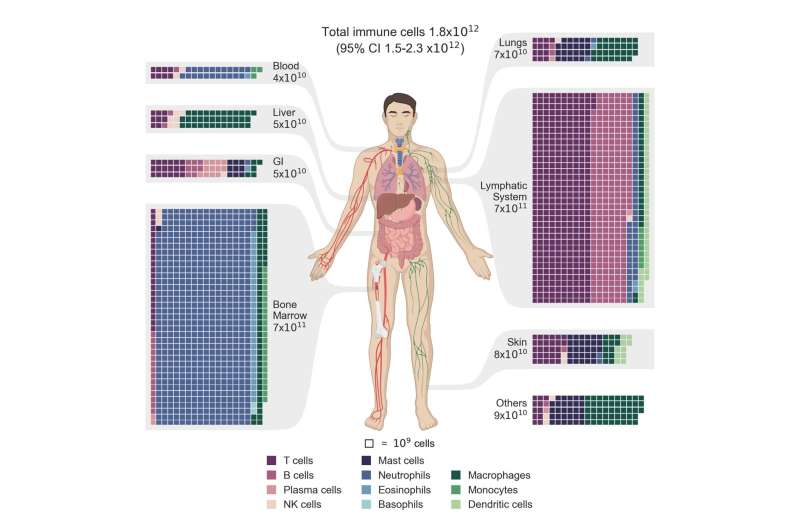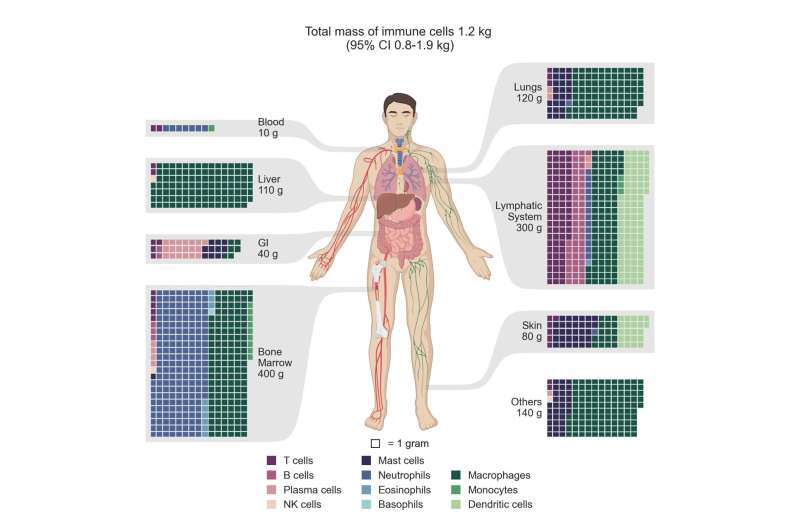October 24, 2023 report
This article has been reviewed according to Science X's editorial process and policies. Editors have highlighted the following attributes while ensuring the content's credibility:
fact-checked
peer-reviewed publication
trusted source
proofread
Taking a census of all the immune cells in the human body

A team of environmental and molecular biologists at the Weizmann Institute of Science, working with a colleague from the Edmond and Lily Safra Children's Hospital and another with The Hebrew University-Hadassah Medical School, all in Israel, has conducted a census of the immune cells that reside in the human body. The group describes their endeavor in a paper published in Proceedings of the National Academy of Sciences.
Prior research has shown that there are many kinds of immune cells in the human body and that they reside in different locations. Most if not all of them have been identified as well. But until now, it was not known how many of each type of cell exist in the average human body, how much room they take up or how much they weigh. In this new effort, the research team filled in that gap by conducting a three-pronged survey of immune cells in three types of average human bodies—a grown male, a grown woman and a child.
The three-pronged approached involved first studying available literature to obtain as much data as possible regarding the different types of immune cells. The second part involved conducting cell imaging to categorize cell phenotypes and complex immune cell types—a means of describing how much room different immune cells take up, wherever they may live. And the third part consisted of computational techniques to estimate cell numbers in different parts of the body, with which the team was able to calculate weights and mass.

The researchers found that the average human adult male has approximately 1.8 trillion immune cells in his body—and taken together, they weigh approximately 1.2 kilograms. The average adult woman, they found, has approximately 1.5 trillion immune cells, weighing approximately 1 kilogram. They also found that the average 10-year-old child has approximately 1 trillion immune cells weighing approximately 0.6 kilograms.
The research team also found that neutrophils and lymphocytes make up approximately 40% of the immune cell population regardless of gender or age—though they make up just 15% of its entire mass.
More information: Ron Sender et al, The total mass, number, and distribution of immune cells in the human body, Proceedings of the National Academy of Sciences (2023). DOI: 10.1073/pnas.2308511120
© 2023 Science X Network



















